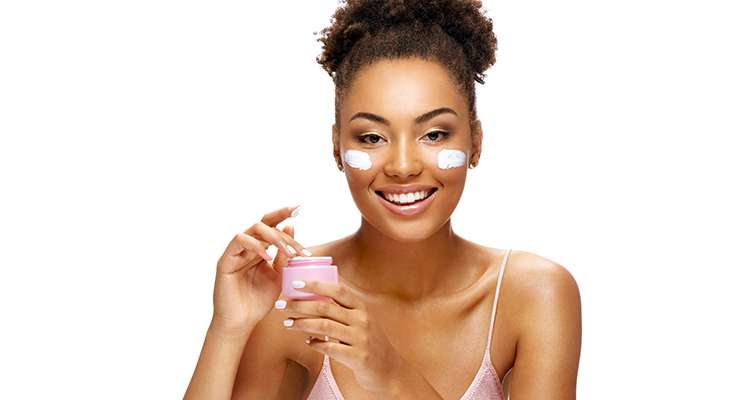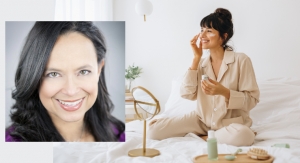Beauty Packaging Staff07.30.20
The NPD Group’s latest report on the Prestige Beauty sector shows that in the second quarter (April-June) of 2020, sales of U.S. prestige beauty products totaled $2.8 billion, a -36% decline in sales over Q2 2019.
In contrast, online sales grew by +90% during these three months, representing about 61% of industry sales volume. The online channel’s market share soared to 70%.
NPD figures show that with the new stay-at-home reality due to Covid-19, consumers have been prioritizing skincare and haircare. Both of these categories have experienced softer declines and faster rebounds as compared to makeup and fragrance.
In comparison to the same period in 2019, Skincare reached $1.1 billion (down -18%, but with an online sales growth of +93%). Makeup drew $869 million in sales (down -52%, with online growth of +79%). Fragrance sales totaled $586.2 million (falling -37%, but growing online at +104%). Hair fell at the lowest percentage to $197.2 million (down -10%, and up +95% online).
With a focus on self-care, the higher performing areas of the market have enabled an at-home spa experience—with product growth in hair masks and other hair treatments (+30%), nail care (+29%), body and facial devices (+16%), body exfoliators (+15%), candles (+13%), and home ancillary gift sets (+88%).
Sales were also influenced by key holidays, with fragrance rising in May and June, driven by key holidays. The week of Mother’s Day, women’s fragrances grew by 96% over the prior week. During the week of Father’s Day, men’s fragrance sales increased 117%, and the increasing popularity of higher concentration formats, such as parfums and eau de parfums, continued.
Week-over-week, the makeup sales declines began to soften in the latter half of the quarter. With protective face mask requirements, the focus has been on the eyes. Post-lockdown (May-June), the average week-over week growth for eye makeup was 6%, driven by products including false eyelashes, mascara, eye brow makeup and eye liner.
According to findings from NPD’s “Future Of Report,” more than half of beauty shoppers in the U.S. intend to purchase beauty products in the next month— a rate that is higher than apparel, footwear, sporting goods, accessories, and watches. In addition, beauty shoppers have remained more optimistic about the future than the average consumer, according to NPD.
“Many bright spots remain despite the continued struggle in prestige beauty, which has been one of the hardest hit industries in 2020. While online sales have been strong, the success of brick and mortar remains a key factor in the industry’s recovery. As we enter the second half of the year, this channel dynamic is one to watch closely. Agility will be important in developing a winning strategy for holiday, which may look very different this year,” said Larissa Jensen, beauty industry advisor, The NPD Group—and a member of Beauty Packaging’s Board of Advisors.
Watch the Webinar
For more on Larissa Jensen’s observations and predictions for the year, tune into Beauty Packaging’s webinar featuring Larissa, seven-time FiFi winning packaging designer Marc Rosen, and beauty and fragrance expert Veronique Gabai-Pinsky.
In contrast, online sales grew by +90% during these three months, representing about 61% of industry sales volume. The online channel’s market share soared to 70%.
NPD figures show that with the new stay-at-home reality due to Covid-19, consumers have been prioritizing skincare and haircare. Both of these categories have experienced softer declines and faster rebounds as compared to makeup and fragrance.
In comparison to the same period in 2019, Skincare reached $1.1 billion (down -18%, but with an online sales growth of +93%). Makeup drew $869 million in sales (down -52%, with online growth of +79%). Fragrance sales totaled $586.2 million (falling -37%, but growing online at +104%). Hair fell at the lowest percentage to $197.2 million (down -10%, and up +95% online).
With a focus on self-care, the higher performing areas of the market have enabled an at-home spa experience—with product growth in hair masks and other hair treatments (+30%), nail care (+29%), body and facial devices (+16%), body exfoliators (+15%), candles (+13%), and home ancillary gift sets (+88%).
Sales were also influenced by key holidays, with fragrance rising in May and June, driven by key holidays. The week of Mother’s Day, women’s fragrances grew by 96% over the prior week. During the week of Father’s Day, men’s fragrance sales increased 117%, and the increasing popularity of higher concentration formats, such as parfums and eau de parfums, continued.
Week-over-week, the makeup sales declines began to soften in the latter half of the quarter. With protective face mask requirements, the focus has been on the eyes. Post-lockdown (May-June), the average week-over week growth for eye makeup was 6%, driven by products including false eyelashes, mascara, eye brow makeup and eye liner.
According to findings from NPD’s “Future Of Report,” more than half of beauty shoppers in the U.S. intend to purchase beauty products in the next month— a rate that is higher than apparel, footwear, sporting goods, accessories, and watches. In addition, beauty shoppers have remained more optimistic about the future than the average consumer, according to NPD.
“Many bright spots remain despite the continued struggle in prestige beauty, which has been one of the hardest hit industries in 2020. While online sales have been strong, the success of brick and mortar remains a key factor in the industry’s recovery. As we enter the second half of the year, this channel dynamic is one to watch closely. Agility will be important in developing a winning strategy for holiday, which may look very different this year,” said Larissa Jensen, beauty industry advisor, The NPD Group—and a member of Beauty Packaging’s Board of Advisors.
Watch the Webinar
For more on Larissa Jensen’s observations and predictions for the year, tune into Beauty Packaging’s webinar featuring Larissa, seven-time FiFi winning packaging designer Marc Rosen, and beauty and fragrance expert Veronique Gabai-Pinsky.




























